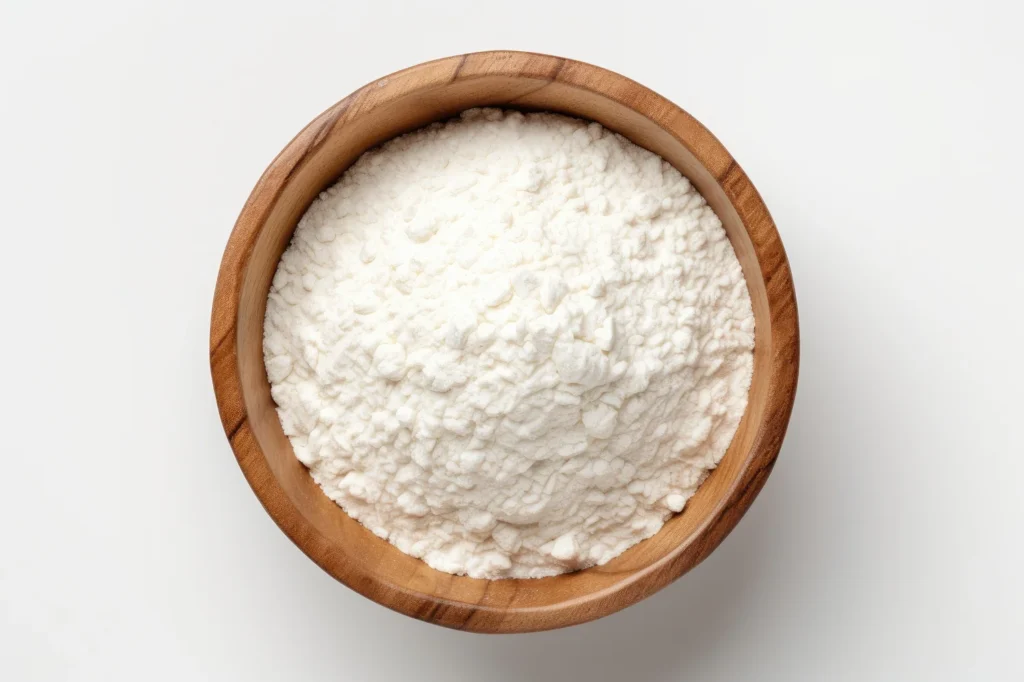
Transforming Rice Starch Into Resistant Starch A Cancer-Fighting & Weight Loss Strategy
What is Resistant Starch?
Resistant starch (RS) refers to the portion of starch that resists digestion in the small intestine and reaches the colon intact. It serves as a prebiotic fiber and is fermented by gut bacteria to produce short-chain fatty acids like butyrate, which have multiple health benefits, including cancer prevention.
How to Convert Regular Rice into Resistant Starch
According to research from Sri Lanka (2015), rice can be made richer in RS through the following method:
1. Add 3% coconut oil to boiling water before adding rice (1 tsp oil per ½ cup rice).
2. Cook the rice normally.
3. Refrigerate the rice for at least 12 hours.
4. Reheat gently before consuming (do not exceed 130°C).
3. Ingredients That Enhance Resistant Starch Benefits
– Coconut Oil: Promotes RS3 formation.
– Lemon Juice: Enhances fermentation in acidic environment.
– Konjac (Glucomannan) or Psyllium Husk: Provides soluble fiber to aid SCFA production.
– Probiotics (e.g., yogurt): Enhances microbial fermentation in the colon.
4. Butyrate: The Colon Cancer Fighter
RS travels to the colon and is fermented by beneficial bacteria such as Bifidobacterium and Faecalibacterium. This fermentation process produces butyrate, a short-chain fatty acid that:
– Serves as the primary energy source for colonocytes
– Strengthens intestinal barriers
– Inhibits inflammation and tumor growth
– Promotes apoptosis of cancer cells
5. Best Cookware for Resistant Starch Rice
– Pressure Cooker: Not ideal as it may degrade RS.
– Standard Rice Cooker: Acceptable with proper control of oil/water.
– Ceramic/Iron Pot: Excellent heat retention and gentle cooking.
– IH Induction Rice Cookers: Recommended for even heating and RS preservation.
6. Daily Tips for Gut Health & Cancer Prevention
– Add 3% coconut oil when cooking rice.
– Chill the cooked rice overnight.
– Reheat before eating (below 130°C).
– Pair with yogurt, lemon juice, and fiber-rich foods.
– Eat RS rice 3–5 times a week for optimal microbiome support.
6.1 Best Rice Types for Resistant Starch
Not all rice is created equal when it comes to resistant starch formation. The type of rice you choose can greatly influence its nutritional value, glycemic impact, and ability to form RS upon cooling:
• Brown Rice: Retains the bran and germ layers, naturally higher in resistant starch and fiber. Rich in B vitamins, magnesium, and antioxidants.
• Black/Purple Rice: High in anthocyanins and fiber, with low glycemic index.
• Basmati Rice (Long Grain): Lower in amylopectin, better for RS formation after cooling.
• White Polished Rice: High in rapidly digestible starch, low RS potential.
• Glutinous (Sticky) Rice: Very low in RS, high glycemic load—NOT recommended.
• Short-Grain Japonica Rice: Sticky texture due to high amylopectin; less ideal for RS.
Recommendation: For the healthiest resistant starch rice, use brown rice, black rice, or long-grain basmati. Cook with coconut oil, cool overnight, and gently reheat.
7. Weight Loss Benefits of Resistant Starch
In addition to its role in gut health and cancer prevention, resistant starch (RS) has been shown to support weight management and fat loss through several mechanisms:
1. Increased Satiety: RS promotes the release of satiety hormones like GLP-1 and PYY, reducing appetite and delaying gastric emptying.
2. Improved Blood Sugar and Insulin Response: RS lowers postprandial glucose and insulin spikes, helping prevent fat storage.
3. Enhanced Fat Oxidation: Studies show RS increases the body’s tendency to burn fat rather than store it.
4. Improved Gut Microbiota: RS nourishes beneficial gut bacteria, reduces inflammation, and supports metabolic balance.
5. Potential Boost to Basal Metabolic Rate: Some studies suggest long-term RS intake may slightly increase resting energy expenditure.
Recommended Intake: 15–20 grams of RS per day for effective weight management.
Note: Initial intake may cause mild bloating or gas, which is a sign of active fermentation. Gradually increase intake to allow gut adaptation.
Summary: Resistant starch is a ‘smart carbohydrate’ that aids in fat loss by regulating appetite, stabilizing blood sugar, and promoting fat burning.
References
- James M. et al. (2015). Transforming rice starch into resistant starch. Sri Lanka College of Chemical Sciences.
- Hamer HM et al. (2008). The role of butyrate on colonic function. Gut, 57(8), 1050–1054.
- Canani RB et al. (2011). Potential beneficial effects of butyrate in intestinal and extraintestinal diseases. World J Gastroenterol.
- Louis P, Flint HJ. (2017). Formation of butyrate and the roles of butyrate-producing bacteria. Nat Rev Gastroenterol Hepatol.
- Sajilata MG et al. (2006). Resistant starch–A review. Comprehensive Reviews in Food Science and Food Safety.
- Bodinham CL et al., British Journal of Nutrition, 2010 (Fifteen overweight men consumed 40 grams of resistant starch (RS) daily, and after four weeks, their postprandial fat oxidation increased and insulin response decreased.)
- Maki KC et al., Nutrition & Metabolism, 2012 (Women who consumed 30 grams of resistant starch (RS) daily for 8 weeks experienced a significant reduction in waist circumference and improved insulin sensitivity.)
- Johnston KL et al., International Journal of Obesity, 2010 (Resistant starch increases the secretion of PYY and GLP-1 hormones, effectively helping to control appetite.)
- Rosen LAH et al., Br J Nutr. 2008:冷藏糙米饭的抗性淀粉含量高于白米,冷却重煮后仍保留显著RS。
- Jenkins DJ et al., Am J Clin Nutr. 2002:糙米的膳食纤维和低GI可显著降低结肠癌与2型糖尿病风险。
- Zhang G et al., Food Chem. 2014:糙米在反复加热冷藏后其RS含量提升至2倍以上。



